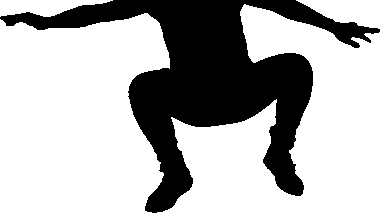The Science Behind Muscle Growth in Home Workouts
Muscle growth, scientifically termed hypertrophy, occurs primarily through cellular changes influencing muscle fibers during exercise. Most individuals seeking to gain muscle participate in resistance training, which can effectively be performed at home. Home workouts can employ various modalities including bodyweight exercises, resistance bands, and free weights. Regardless of the equipment used, the fundamental concept revolves around applying progressive overload. This principle dictates that to stimulate muscle growth, the resistance or workload must gradually increase over time. Moreover, ensuring proper nutrition, hydration, and rest is pivotal in facilitating recovery and growth. For optimal results, one must maintain a diet rich in proteins, healthy fats, and carbs. Strength training causes minor tears in muscle fibers, and proper recovery allows these fibers to heal stronger. Both mechanical tension and metabolic stress are crucial factors that contribute to hypertrophy. Bodyweight exercises like push-ups or squats can be modified for intensity by altering body positions or increasing repetitions. Integrating variety in workouts keeps the muscles engaged, preventing plateaus. Tracking workouts can help monitor progress and motivate individuals to push through challenges toward achieving their fitness goals.
A key factor in muscle development is the frequency of training. Research supports that training each muscle group two to three times weekly promotes optimal growth rates. Thus, home workout regimens should ensure that every major muscle group is addressed multiple times throughout the week. While many people use the traditional split workout routine, full-body workouts can be exceptionally efficient at home. Full-body workouts utilize multiple muscle groups within a single session, allowing for rigorous training without extensive time commitment. Consistently performing exercises such as deadlifts, bench presses, and overhead presses at home can be achieved with minimal equipment. Additionally, varying rep ranges can stimulate different muscle adaptations. For example, lower rep ranges focusing on strength, while higher rep ranges emphasize muscle endurance. Ensuring that appropriate techniques and forms are standardized minimizes the risk of injury, thereby maximizing effectiveness. Additionally, incorporating rest days into the workout routine is essential for allowing muscles to repair and grow. A well-rounded home workout plan will integrate strength training, flexibility work, and cardiovascular conditioning to achieve balanced development. In summary, achieving muscle growth at home requires careful planning and dedication to exercise and recovery protocols.
Nutrition’s Role in Muscle Growth
Nutrition plays a critical role in muscle growth. Consuming enough protein is vital for muscle repair and hypertrophy. The general consensus among fitness experts is that individuals aiming to increase muscle mass should consume approximately 1.6 to 2.2 grams of protein per kilogram of body weight daily. Good sources of protein include chicken, fish, dairy, legumes, and plant-based options. Carbohydrates also hold significance as they provide the energy needed during workouts. Proper pre- and post-workout meals can maximize training efficiency. For instance, a meal rich in complex carbohydrates aids in sustaining energy levels throughout a workout. Furthermore, post-workout protein intake can help kickstart muscle repair. Hydration is equally significant; maintaining fluid balance optimizes performance and recovery. This can be achieved through adequate water and electrolyte intake. Supplementation can be beneficial, but it should not replace whole food sources. Values like creatine and branched-chain amino acids (BCAAs) have shown promise in supporting muscle growth. However, they should be viewed as additions rather than substitutes. Balancing macronutrients ensures that muscles receive all necessary nutrients for growth, making savvy nutritional choices an indispensable aspect of any successful muscle-building home workout program.
Progressive overload is essential for muscle gain. It involves gradually increasing the weight, volume, repetitions, or intensity of workouts over time. By consistently challenging your muscles, they adapt and grow stronger. A good home workout plan incorporates this principle through various means. For example, when using bodyweight exercises, adjustments can include elevating the feet or decreasing rest intervals between sets. Using resistance bands or weights provides additional resistance, allowing for incremental increases in intensity as your strength improves. Tracking these modifications ensures that you’re continually applying overload. Another method is to explore different exercises targeting the same muscle group. Incorporating variations prevents muscle adaptation and keeps the workouts exciting. Beyond simply lifting heavier weights, varying movement patterns and techniques can elicit different stimulus on the muscles. Adapting your workouts keeps them fresh and helps avoid plateaus in muscle growth. Additionally, listening to your body and allowing sufficient recovery time is equally crucial in your pursuit of muscle gain. Overtraining can lead to setbacks and injuries. By embracing a thoughtful approach to progressive overload with adequate nutrition and rest, home workouts can effectively lead to significant muscle gains. Consistency is the linchpin in this endeavor.
Strength Training Techniques for Home Workouts
Effective strength training techniques for home workouts encompass a wide array of methods, ensuring that individuals can achieve their goals independently. Compound exercises leverage multiple muscle groups simultaneously, making them efficient and effective for muscle gain. Effective compound lifts include squats, lunges, and push-ups, which can be adapted for different fitness levels. Isolated exercises can complement compound movements for targeted muscle engagement. For instance, bicep curls, tricep extensions, or calf raises refine specific areas and contribute to overall muscular development. Integrating super-setting and circuit training can elevate workout intensity and efficiency. Super-setting entails performing two exercises consecutively without rest, while circuit training involves completing a series of exercises back-to-back with minimal breaks. These methods can enhance muscle endurance alongside hypertrophy, delivering comprehensive benefits. Furthermore, the use of technology can augment home workouts. Fitness apps often provide workout plans, video demonstrations, and tracking capabilities. These resources can elevate a home exercise experience, providing structure and motivation. Ultimately, utilizing a blend of strength training techniques will yield well-rounded development, and consistency paired with variation can foster continuous progress toward muscle growth goals.
Rest and recovery are vital components of any muscle-building program, especially when training at home. While it may seem counterintuitive to prioritize rest, it’s essential for muscle repair and growth. During intense workouts, micro-tears occur in muscle fibers, which require time to rebuild stronger. This recovery process is where muscle growth truly happens. Typically, alternating muscle groups on different days allows specific muscles to recover, while others are being trained. Moreover, sleep also significantly influences muscle recovery and growth. Aim for 7 to 9 hours of quality sleep per night, as this is the time when growth hormone release peaks. Techniques such as stretching, foam rolling, and gentle yoga can facilitate active recovery, improving flexibility and reducing soreness. Hydration also aids recovery by flushing out toxins and delivering nutrients to muscles. Listening to your body’s signals is paramount; if fatigue sets in, it may be time to take a rest day or reduce workout intensity. Overall, prioritizing rest can enhance workout performance, prevent injuries, and ultimately foster consistent muscle growth. This foundational aspect is often overlooked but is critical for successful home workout regimes focused on muscle gain.
Conclusion: Mastering Muscle Growth at Home
In conclusion, mastering muscle growth at home can be an enlightening journey marked by dedication, experimentation, and understanding of personal progress. The ability to harness various tools and techniques ensures a tailored approach suited to individual needs and lifestyles. Central to this process is the profound understanding of muscle physiology and how specific workouts can influence growth. By ensuring workouts are diverse, engaging, and progressively challenging, individuals will see tangible results. Incorporating a balanced diet ensures that the body has the necessary nutrients to fuel workouts and recover optimally. Regular reassessment of personal goals and adjusting the workout regimen can facilitate continual growth. Embracing a community, whether through online platforms or local fitness groups, can provide support and accountability. Beyond the physical benefits, cultivating mental resilience and discipline through home workouts fosters a holistic sense of well-being. Ultimately, as you dive deeper into your home workout routine, remember that patience and consistency are essential. Every workout counts toward the goal of muscle gain, and the journey itself holds immeasurable value.
Note that none of the content should be considered as professional medical or fitness advice. It is always recommended to consult with fitness professionals before starting a new workout regimen. Gathering knowledge on proper exercise techniques can also prevent injuries. Staying up-to-date with the latest studies can provide insights into evolving methodologies of muscle gain. Educating oneself on the importance of mental health within fitness journeys can contribute positively. Thus, fitness is not just about physical appearance; it’s holistic, integrating mental resilience and emotional stability. Find what you enjoy; this makes adherence easier. With the right goals and mindset, home workouts can be incredibly rewarding and efficient. This journey is ongoing, and evolving your training approach will facilitate long-term success in muscle gain. Enjoy the process, embrace the challenges, and celebrate the small victories along the way. Home workouts are an accessible and effective means of achieving your physical fitness aspirations without the need for expensive gym memberships.


